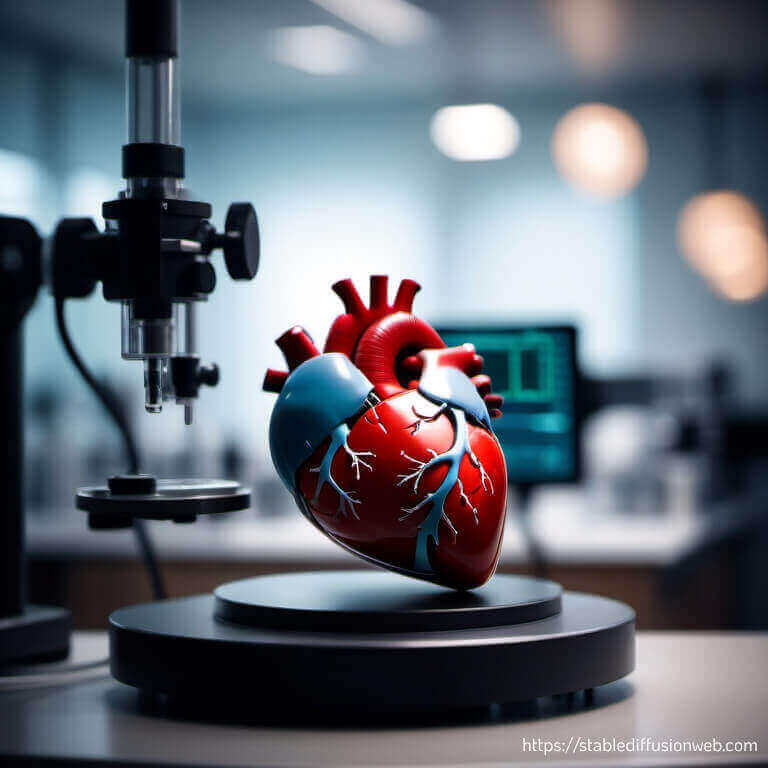The human heart is a marvel of engineering, tirelessly pumping blood throughout the body to […]
The human heart is a marvel of engineering, tirelessly pumping blood throughout the body to sustain life. At the core of this remarkable organ’s functionality lies a fundamental process known as the sodium-potassium pump, or simply the potassium pump. This intricate mechanism plays a pivotal role in maintaining the electrical and chemical balance essential for a healthy heart. In this exploration, we will delve into the workings of the potassium pump, its significance in heart health, and the requirements for it to function smoothly.
The Potassium Pump: An Overview
The sodium-potassium pump is a specialized protein complex found in the cell membranes of most animal cells, including those in the heart. Its primary function is to regulate the concentration of sodium (Na+) and potassium (K+) ions inside and outside the cell. This dynamic balance is crucial for various cellular processes, but its significance is most apparent in the context of heart health.
How Does the Potassium Pump Work?
Active Transport: The sodium-potassium pump operates through a process called active transport,  which means it requires energy to function. This energy is derived from adenosine triphosphate (ATP), the cell’s primary energy currency.
which means it requires energy to function. This energy is derived from adenosine triphosphate (ATP), the cell’s primary energy currency.
Sodium and Potassium Exchange: The pump uses the energy from ATP to move three sodium ions out of the cell and two potassium ions into the cell. This exchange of ions occurs against their concentration gradients, making it energetically unfavorable and requiring the input of energy.
Maintaining Ion Balance: The result of this exchange is that the intracellular environment becomes rich in potassium ions and depleted in sodium ions compared to the extracellular environment. This contributes to a negative electrical charge inside the cell, known as the resting membrane potential.
Significance in Heart Health
Electrical Signaling: The resting membrane potential established by the sodium-potassium pump is essential for generating and propagating electrical signals in heart cells. These signals coordinate the rhythmic contractions of the heart muscle, allowing it to pump blood efficiently.
Cardiac Rhythm: The sodium-potassium pump plays a pivotal role in maintaining the cardiac rhythm. Disruptions in ion balance can lead to arrhythmias, irregular heartbeats that can have serious consequences for heart function.
Muscle Contraction: The sodium-potassium pump indirectly influences heart muscle contraction by regulating the calcium ion concentration in cardiac cells. Proper calcium handling is critical for muscle contraction, and any imbalance can impair the heart’s ability to pump effectively.
Requirements for a Smoothly Functioning Potassium Pump
To ensure that the sodium-potassium pump operates smoothly and contributes to optimal heart health, several requirements must be met:
Adequate Nutrition: Proper nutrition is essential for providing the body with the necessary building blocks, including potassium and sodium. A balanced diet rich in potassium sources like bananas, oranges, and leafy greens helps maintain the ion balance required for the pump’s function.
Hydration: Maintaining proper hydration levels is crucial for electrolyte balance. Dehydration can disrupt ion concentrations, making it harder for the pump to maintain the resting membrane potential.
Energy Supply: As an energy-dependent process, the sodium-potassium pump relies on a constant supply of ATP. A healthy heart requires an efficient energy production system, which can be achieved through regular physical activity and a balanced diet.
Medication Management: Some medications, such as diuretics, can affect potassium levels in the body. Individuals taking such medications should work closely with healthcare professionals to monitor their electrolyte balance and adjust their treatment plan if necessary.
Avoiding Excessive Sodium: A diet high in sodium can disrupt the sodium-potassium balance, potentially leading to hypertension (high blood pressure) and increased strain on the heart. Reducing sodium intake by avoiding processed foods and adding less salt to meals can help maintain a healthy ion balance.
Regular Exercise: Physical activity promotes overall cardiovascular health and helps maintain proper ion balance. Exercise increases blood circulation, which in turn supports the delivery of nutrients and removal of waste products from heart cells.
Smoking Cessation: Smoking is a major risk factor for heart disease and can disrupt the normal functioning of the sodium-potassium pump. Quitting smoking is one of the most significant steps an individual can take to promote heart health.
Conclusion
The sodium-potassium pump, a seemingly small but immensely significant cellular mechanism, serves as the cornerstone of heart health. Its role in maintaining ion balance, electrical signaling, and muscle contraction in cardiac cells underscores its vital importance. To ensure a smoothly functioning potassium pump and promote overall heart health, individuals must pay attention to nutrition, hydration, energy supply, medication management, sodium intake, exercise, and lifestyle choices. By doing so, we can better appreciate and protect the marvel of nature that is our beating heart.













